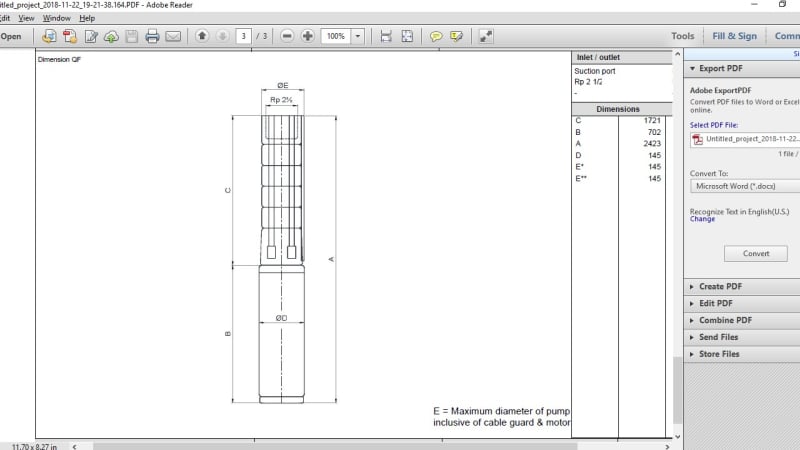Hi All,
We have a submersible pump with the below spec. daily around 300,000 liters of water will be pumped in a time span of 15 hours.
The sump will be continuously filled with water and will be pumped from there to the overhead tank.
Existing pump
QF-10 24 stg with 10 hp sml motor
giving discharge of – 18 Cm / HR @ 96 Mtr head @ Efficiency of 63.1 %
The pump draws water from a sump of dimensions (16 ft x 20 ft x 6 ft) to an overhead tank at a distance of around 400 meters away.
Now we would like to have a backup for the existing pump.
The vendor suggested the below spec.
Cld throw some light on this to see is this the best backup option?
Backup Pump spec:
QF-30 20 stg with 12.5 hp sml motor -
giving discharge of – 20 Cm / HR @ 100 Mtr head @ efficiency of 73.4 %
Thanks and regards,
We have a submersible pump with the below spec. daily around 300,000 liters of water will be pumped in a time span of 15 hours.
The sump will be continuously filled with water and will be pumped from there to the overhead tank.
Existing pump
QF-10 24 stg with 10 hp sml motor
giving discharge of – 18 Cm / HR @ 96 Mtr head @ Efficiency of 63.1 %
The pump draws water from a sump of dimensions (16 ft x 20 ft x 6 ft) to an overhead tank at a distance of around 400 meters away.
Now we would like to have a backup for the existing pump.
The vendor suggested the below spec.
Cld throw some light on this to see is this the best backup option?
Backup Pump spec:
QF-30 20 stg with 12.5 hp sml motor -
giving discharge of – 20 Cm / HR @ 100 Mtr head @ efficiency of 73.4 %
Thanks and regards,


